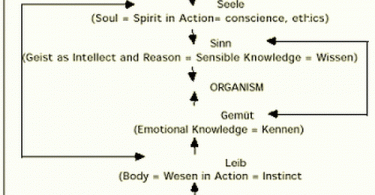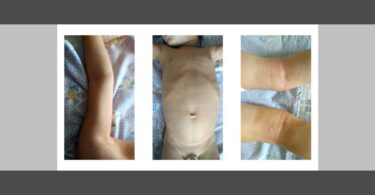ABSTRACT: The word repertory means a storehouse, repository, store or collection, especially of facts or information. The repertory helps us to find the required symptoms, together with the medicine or a group of medicines having different grades. The aim of this article is to show the relationship of the repertory with allied subjects.
KEYWORDS: Homoeopathy, Repertory, Pharmacy, Materia Medica, Organon of Medicine, FMT, Pathology, Surgery, Gynae. & Obs., Practice of Medicine, PSM, Paediatrics, Psychiatry, Anatomy, Physiology.
DISCUSSION:
RELATIONSHIP OF REPERTORY WITH PHARMACY:
Pharmacy is an art and science, by means of which we can acquire a sound knowledge about the art of identifying, collecting medicinal substances from different sources of nature, preparing, preserving them in the laboratory, combining, compounding according to the rules and regulations of pharmacopoeia and dispense medicine according to the direction of physicians. Pharmacy and repertory are the subjects of homoeopathy, which have correlation between each other in many aspects. This is as follows, natural relation, clinical relation. Natural relation: Plant, animal, minerals, nosodes & sarcodes. [1]
RELATIONSHIP OF REPERTORY WITH HOMOEOPATHIC MATERIA MEDICA:
Homeopathic materia medica consists of genuine, pure, reliable and authenticated symptoms of simple substances ascertained after complete proving on relatively healthy human beings. Knowledge of the materia medica is quite essential for repertorisation.
But it is impossible to keep in one’s head the mass of symptoms as recorded in an encyclopedia of symptoms. No mind can memorize all the symptoms of all the drugs with their characteristics and gradations.
Materia medica is an encyclopedia of symptoms, and repertory is a catalogue of symptoms of materia medica neatly arranged in a practical form. Repertory starts with a broad choice of a group of remedies which gradually narrows down to smaller groups to get a final simillimum materia medica.
There are some correlations between M.M. and repertory and they are both essential for reaching the simillimum. Repertory makes the task of finding the simillimum easier.
In materia medica many remedies have similar key notes and symptoms so in that manner only a few can be remembered, but with the help of repertory one easily gets many remedies by searching a single symptom at one place.
Grading of the symptoms is not mentioned in materia medica but with the help of repertory, that information can be had.
RELATIONSHIP OF REPERTORY WITH ORGANON OF MEDICINE:
Organon of Medicine of is an instrument for logical study in which Dr. Hahnemann explains all details about the principles of homeopathy. Organon is a for case taking, potency, repetition of the dose, special hints for collecting proper data from the case and after case taking the repertory helps in miasmatic analysis.
RELATIONSHIP OF REPERTORY WITH PAEDIATRICS
Paediatics; The area of the medicine connected with the diseases of children.
Repertory has many rubrics related to children. In children’s cases we do not get as many symptoms, as they can’t describe their disease state properly. Sometimes, to reach the simillimum we have to select rubrics based on observations we made in children. In repertory there are many rubrics for children. For example:
RELATIONSHIP OF REPERTORY WITH PRACTICE OF MEDICINE:
The practice of medicine should combine both the science and art of medicine. The science of medicine covers laboratory investigations and radiological and biophysical imaging techniques; the art of medicine covers the application of scientific knowledge with intuition, analysis and judgement.
This can only be learnt from teachers, patients and one’s own practice. To be a competent physician requires patience, hard work and keen interest in a sick person. The physician should have humanistic qualities and should be considerate about the feelings and fears of the patient.
He should not consider his patient a bundle of symptoms, abnormal physical signs and pathological tissues but a human being who has approached him for relief of his physical and/or mental agony. The repertory has many diagnostic rubrics.
RELATIONSHIP OF REPERTORY WITH F.M.T.
Forensic medicine is the branch of medical science which deals with the medical knowledge and application in establishment of facts with criminal or civil legal cases.
Forensic Toxicology: It is the practice of toxicology and other disciplines such as analytical chemistry, pharmacology & clinical chemistry to aid medical or legal investigation of death, poisoning, & drug use.
Repertories have many rubrics of poisoning like as:
RELATIONSHIP OF REPERTORY WITH GYNAECOLOGY & OBSTETRICS:
Gynaecology is the medical practice dealing with the health of the female reproductive system (vagina, uterus, and ovaries).
Obstetrics is the area of study which is based on pregnancy, childbirth and the postpartum period.
Repertory have many rubrics related to gynecology and obstetrics and every repertory has separate chapters of “female”.
(UTERINE THERAPEUTICS by HENRY MINTON)
BOENNINGHAUSEN’S CHARACTERISTICS MATERIA
MEDICA & REPERTORY. BY C. M. BOGER
Chapter –
FEMALE ORGANS.
Female organs. (p. 656)
Time. (p. 664)
Conditions. (p. 665)
MENSTRUATION.
Menstruation. (p. 675)
Concomitants before menses. (p. 678)
Concomitants at start of menses. (p. 681)
Concomitants during menses. (p. 682)
Concomitants after menses. (p. 686)
Leucorrhœa. (p. 687)
Concomitants to Leucorrhœa. (p. 689)
Repertory of the Homeopathic Materia Medica by J.T. Kent
GENITALIA – GENITALIA – FEMALE (p. 714)
RELATIONSHIP OF REPERTORY WITH PSYCHIATRY:
Medical psychiatry deals with the diagnosis, prevention, and treatment of mental disorders. In this it includes various mal-adaptations related to mood, cognition, behavior and perceptions.
Repertory encloses many rubrics in the mind section which are helpful and beneficial in reaching to the simillimum.
RELATIONSHIP OF REPERTORY WITH PHARMACY SURGERY:
Surgery is a branch of medicine that uses manual operations and instrumental techniques to investigate or treat a pathological condition such as a disease or injury. Surgery involves abrading, cutting, suturing. The repertory has rubrics for preventing some surgical condition like gall stones, and also rubrics for post-surgical effects.
RELATIONSHIP OF REPERTORY WITH PATHOLOGY:
Pathology involves the study and diagnosis of disease through the examination of surgically removed organs, tissues (biopsy samples), bodily fluids, and in some cases the whole body (autopsy).
There are many repertories which mention various pathological conditions like BBCR, MURPHY.
RELATIONSHIP OF REPERTORY WITH PREVENTIVE AND SOCIAL MEDICINE / COMMUNITY MEDICINE:
Preventive and social medicine is a branch which helps in taking measures to prevent diseases and promote health. Repertories help in finding the genus epidemicus for diseases and there are also rubric for effects of vaccination.
RELATIONSHIP OF REPERTORY WITH ANATOMY:
Anatomy deals with the scientific study of the structure of human and animal bodies.
Anatomy holds its place in the repertory and reportorial method. Boenninghausen describes complete symptoms (LOCATION, SENSATION, MODALITIES, CONCOMITANTS), and particular part of anatomy. Location is important to obtain a complete symptom. Kent’s repertory chapters are arranged anatomically.
RELATIONSHIP OF REPERTORY WITH PHYSIOLOGY:
Physiology is a branch of biology that deals with the normal functions of living organisms and their parts. Physiology also holds its place in repertory. Knowledge of physiology helps us know what is normal and what is abnormal.
CONCLUSION:
This article shows that repertory has relationships with all allied subjects in many aspects.
REFERENCES:
- MANDAL P.P., MANDAL B., A Text Book of Homoeopathic Pharmacy. Second edition:2004, new central book agency (P) Ltd.
- Tiwari Essentials of Repertorization, Fifth Edition, B Jain Publisher Ltd., 2012
- Samuel Hahnemann (B.K. Sarkar) : Organon of Medicine, 5th & 6th Edition, 1984, 8th Indian Edition, Pub.: M. Bhattacharya & Co. (p) Ltd., Calcutta-1.
- Ghai OP., Essentials Pediatrics, 8th Edition, New Delhi, 2013.
- Computer Repertory: CARA Professional (Version 1.4)
- Bogar Boger Boenninghausen’s Characteristics & Repertory With Corrected Abbreviations & Word Index, 37th Impression, B Jain Publisher Ltd., 2012.
- Kent T. Repertory of the Homoeopathic Materia Medica, Reprint Edition, Oct. Indian Books & Periodicals Publishers, 2013.
- Sainani G.S., Abraham, Dastur F.D., Abraham P, Dastur FD, Joshi VR, et al. A.P.I. Text Book of Medicine. 6th Edition. Association of Physicians of India Mumbai, 1999.











